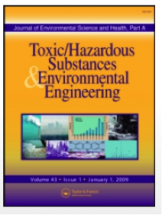In oil sands mining extraction, water is an essential component; however, the processed water becomes contaminated through contact with the bitumen at high temperature, and a portion of it cannot be recycled and ends up in tailing ponds. The removal of naphthenic acids (NAs) from tailing pond water is crucial, as they are corrosive and toxic and provide a substrate for microbial activity that can give rise to methane, which is a potent greenhouse gas. In this study, the conversion of sawdust into an activated carbon (AC) that could be used to remove NAs from tailings water was studied. After producing biochar from sawdust by a slow-pyrolysis process, the biochar was physically activated using carbon dioxide (CO2) over a range of temperatures or prior to producing biochar, and the sawdust was chemically activated using phosphoric acid (H3PO4). The physically activated carbon had a lower surface area per gram than the chemically activated carbon. The physically produced ACs had a lower surface area per gram than chemically produced AC. In the adsorption tests with NAs, up to 35 mg of NAs was removed from the water per gram of AC. The chemically treated ACs showed better uptake, which can be attributed to its higher surface area and increased mesopore size when compared with the physically treated AC. Both the chemically produced and physically produced AC provided better uptake than the commercially AC.

